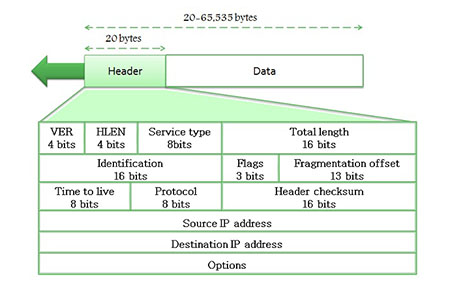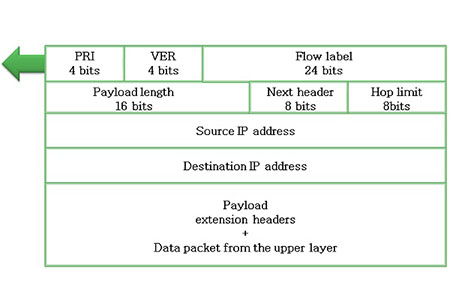
IPv4 and IPv6 are versions of the Internet Protocol, where IPv6 is an enhanced version of IPv4. This article will introduce to you what IPv4 and IPv6 are, so that you can have a simple understanding of the IPv4 and IPv6 protocols. I hope it will be helpful to you.

Before introducing IPv4 and IPv6, let us first understandInternet protocol: What is the IP protocol?
IP (short for Internet Protocol) specifies the technical format of data packets and the addressing scheme for computers to communicate over a network. Most networks combine IP with a higher-level protocol called Transmission Control Protocol (TCP), which establishes a virtual connection between the destination and source.
IP itself can be compared to the postal system. It allows you to resolve a package and put it into the system, but there is no direct link between you and the recipient. TCP/IP, on the other hand, establishes a connection between two hosts so that they can send messages back and forth over a period of time.
IP provides three main contents:
1. Standardize the exact format of all data.
2. It performs routing functions and selects the path to send data.
3. It involves a series of rules that support the idea of unreliable packet delivery.
There are currently two versions of the Internet Protocol (IP): IPv4 protocol and IPv6 protocol. IPv6 is an evolutionary upgrade of the Internet protocol.
What is IPv4 (Internet Protocol Version 4)?
IPv4 (Internet Protocol Version 4) is the fourth version of the Internet Protocol (IP) used to identify devices on a network through an addressing system. The Internet Protocol was designed to An interconnection system for packet-switched computer communications networks.
IPv4 is the most widely deployed Internet protocol used to connect devices to the Internet.
Definition of IPv4
IPv4 uses a 32-bit binary address scheme, which can be displayed as a four-digit decimal number (decimal representation of IPv4, example: 128.11.3.31), The IPv4 address space provides approximately 4.3 billion addresses. Only 3.7 billion of the 4.3 billion addresses can be allocated, and the other addresses are used for specific purposes.
As the Internet grows, it is expected that the number of unused IPv4 addresses will eventually be exhausted, as every device connected to the Internet, including computers, smartphones, and game consoles, will require
Packet format
The IPv4 packet is a variable-length packet that includes a header (20 bytes) and data (up to 65,536 plus the header). The header contains information necessary for routing and delivery.

IPv4 Packets
As the Internet grows, it is expected that the number of unused IPv4 addresses will eventually be exhausted as every device connected to the Internet, including Computers, smartphones and game consoles) all require an address.
What is IPv6 (Internet Protocol Version 6)?
The new Internet addressing system Internet Protocol version 6 (IPv6) is being deployed to meet the demand for more Internet addresses.
IPv6 is the successor to Internet Protocol version 4 (IPv4). It was designed as an evolutionary upgrade of the Internet protocol, and will actually coexist with the older IPv4 for some time. IPv6 is designed to allow the Internet to grow steadily in terms of the number of connected hosts and the total amount of data traffic transferred.
IPv6 is often referred to as the "next generation" Internet standard and has been under development since the mid-1990s. IPv6 was born out of concerns that demand for IP addresses exceeded the available supply.
Definition of IPv6
IPv6 uses a 128-bit binary address scheme that can be displayed as a four-digit decimal number (IPv6 hexadecimal address notation: FDEC :BA98:7654:3210:ADBF:BBFF:2922:FFFF). A colon separates entries in a sequence of 16-bit hexadecimal fields.
IPv6 provides 3.4 x (10 to the 38th power) IP addresses. This version of IP addressing is designed to meet the demand for depleted IP and provide enough addresses for future Internet growth needs.
Because IPv4 uses a two-level address structure, the address space is underused. This is why IPv6 was proposed, to overcome the shortcomings of IPv4. The format and length of IP addresses change as packet formats change and protocols are modified.
IPv6 Packet Format
Each packet consists of a payload followed by a mandatory basic header. The payload consists of two parts, the optional extension header and the data from the upper layer. The basic header consumes 40 bytes, whereas the extended header and data from the top layer typically hold up to 65,535 bytes of information.

Benefits of IPv6
Although increasing address values is one of the most talked about benefits of IPv6, there are other important technical changes in IPv6 that will improve the IP protocol:
1. No more NAT (Network Address Translation)
2. Can be configured automatically
3. No more private address conflicts
4. A better multicast routing
5. Simpler Title format
6. Simplified, more efficient routing
7. True Quality of Service (QoS), also known as "flow tags"
8. Built-in Authentication and privacy support
9, flexible options and extensions
10, easier management (goodbye DHCP)
Summary:That’s it The entire content of this article is hoped to be helpful to everyone's study.
The above is the detailed content of What are IPv4 and IPv6. For more information, please follow other related articles on the PHP Chinese website!
 The difference between ipv4 and ipv6
The difference between ipv4 and ipv6
 What are the types of traffic?
What are the types of traffic?
 Introduction to javascript special effects code
Introduction to javascript special effects code
 How to solve the problem that laptop network sharing does not have permissions?
How to solve the problem that laptop network sharing does not have permissions?
 Solution to no sound in win7 system
Solution to no sound in win7 system
 html to txt
html to txt
 What software is ae
What software is ae
 How to open a digital currency account
How to open a digital currency account